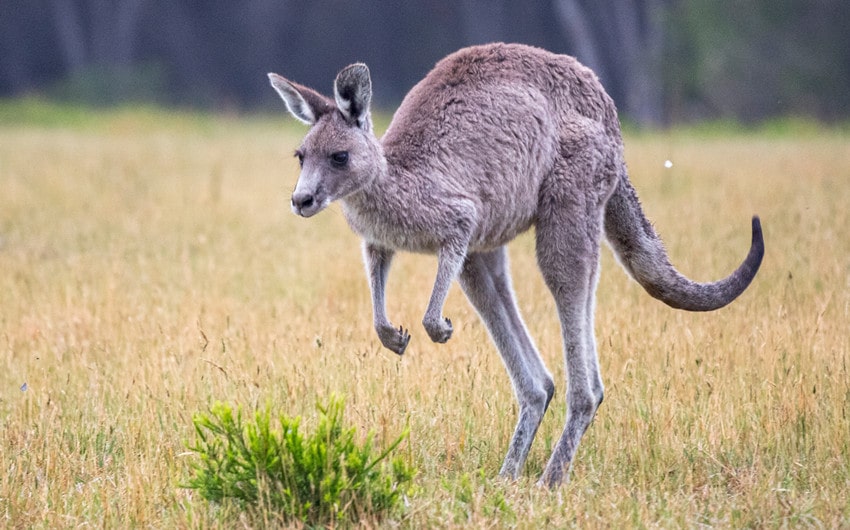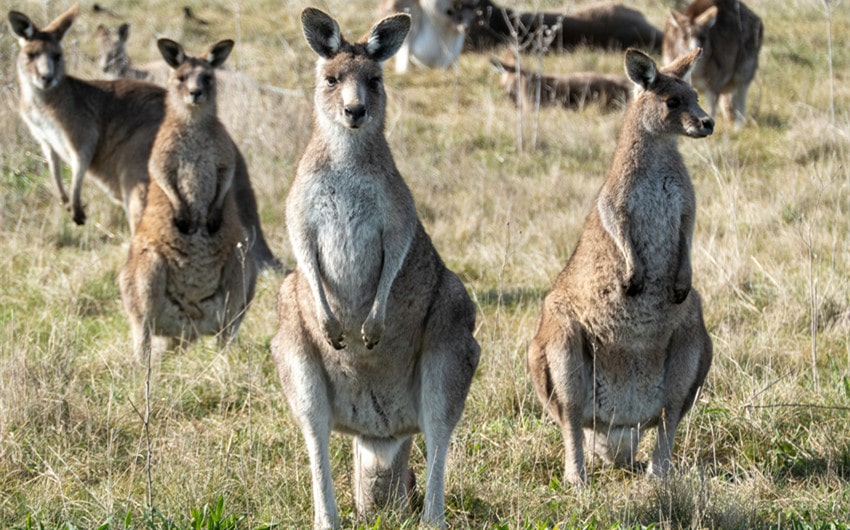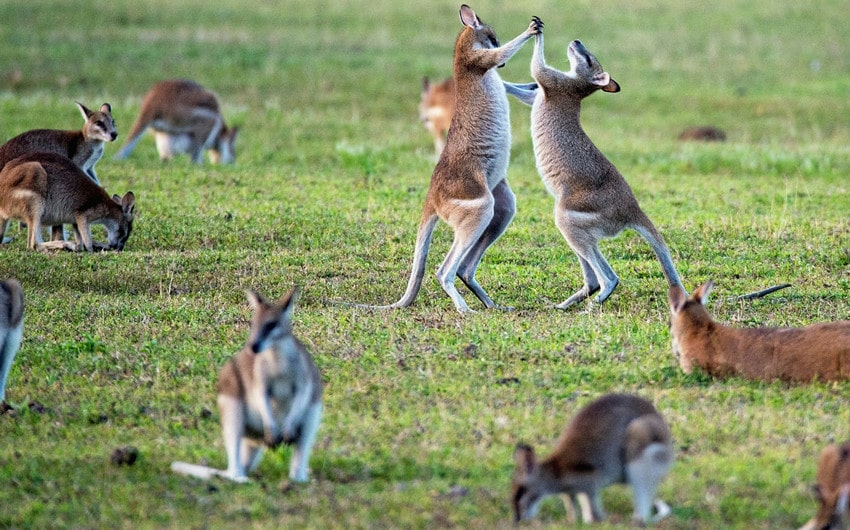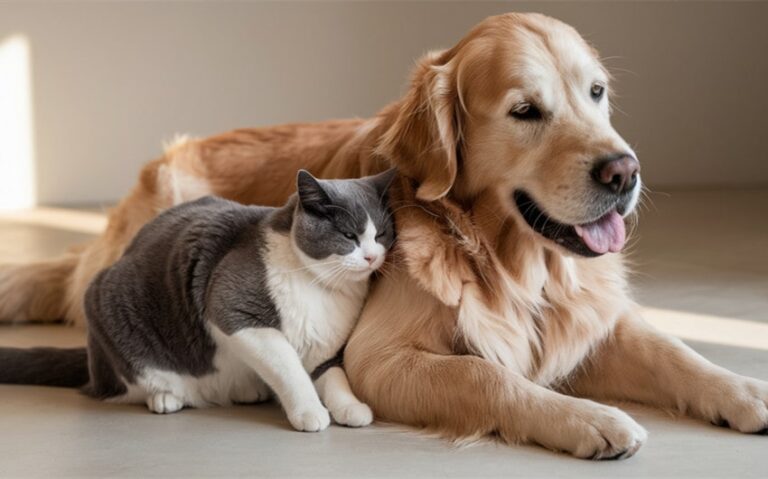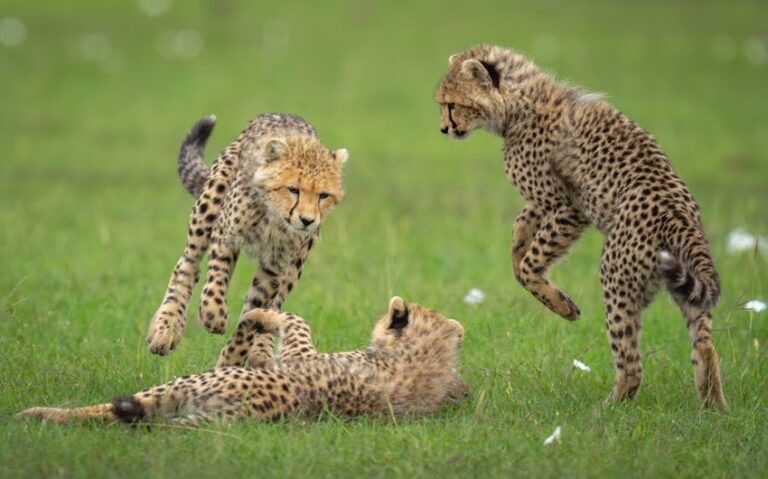Why Kangaroos Are So Muscular And How It Helps Them?
When you picture a kangaroo, you probably imagine a powerful animal with bulging muscles, ready to leap or square off in a showdown. It’s not just your imagination — kangaroos really are impressively built. Many people naturally wonder why kangaroos are so muscular compared to other animals you might see in the wild. Their strength isn’t just for show; it plays a major role in how they move, survive, and compete.
In this article, we’ll take a closer look at the fascinating reasons behind their muscular physiques and what it tells us about life in the Australian outback.
Evolutionary Advantages of a Muscular Build
Strength Equals Survival
In the wild, strength often means the difference between survival and struggle. For kangaroos, being muscular allows them to travel vast distances across harsh Australian landscapes in search of food, water, and shelter. Powerful bodies help them endure the physical demands of living in an environment where resources can be scarce and widely scattered.
A strong, muscular build also offers protection from predators. Although kangaroos are prey animals, their size and strength can deter would-be attackers. A single powerful kick from a kangaroo’s hind legs can deliver enough force to injure or scare off a threat, giving them a much better chance of survival.
Energy Efficiency and Muscle Mass
Kangaroos have evolved to conserve energy through their muscular structure. Their large, powerful muscles are perfectly adapted for hopping, which uses far less energy than running would for animals of their size. By storing and releasing elastic energy with each leap, their muscles and tendons work like natural springs.
This energy-efficient mode of movement gives them an evolutionary edge. In a land where they might need to travel miles between food sources, having a body designed for low-energy travel ensures they can cover ground quickly without exhausting themselves.
Role of Locomotion: Powerful Legs and Hopping
Kangaroo movement is one of the most unique in the animal kingdom. Instead of walking or galloping, kangaroos rely on hopping as their primary mode of travel. This isn’t just a quirky characteristic — it’s a highly efficient way for large animals to move over long distances.
Their enormous leg muscles are the secret behind this ability. These muscles allow them to launch their entire body into the air with incredible force, minimizing ground contact time and maximizing speed and distance. In fact, kangaroos can sustain speeds up to 35 miles per hour and leap more than 25 feet in a single bound. Without their muscular build, this kind of locomotion simply wouldn’t be possible.
Another interesting aspect is how kangaroos use their tails during movement. Their tails act like a third leg, helping them balance and push off when hopping or even when slowly moving around. The tail itself is heavily muscled, adding even more to the kangaroo’s overall robust appearance and strength-focused anatomy.
Fighting and Competition Among Males
When it comes to kangaroos, muscles aren’t just for movement — they are critical tools for fighting and dominance. Male kangaroos, known as boomers, often engage in intense physical battles to compete for mating rights and establish social hierarchy within their groups.
During these fights, kangaroos stand upright, balance on their tails, and kick at each other with their powerful legs. They also grapple with their forearms, almost like boxers. A more muscular male usually has the advantage in these encounters, as greater strength means better balance, more forceful kicks, and a better chance of winning.
Winning fights isn’t just about pride; it directly impacts a kangaroo’s ability to reproduce. Females tend to mate with the strongest males, believing strength is a sign of good genes. As a result, natural selection favors bigger, stronger males, reinforcing the cycle of muscular development in future generations.
Hormonal Factors Influencing Muscle Growth
Behind those bulging kangaroo muscles is a powerful cocktail of biology and hormones. Male kangaroos, particularly the dominant ones, have higher levels of testosterone compared to females or less dominant males. This hormone plays a major role in building and maintaining muscle mass.
Testosterone promotes muscle growth by stimulating protein synthesis in muscle fibers, leading to larger and stronger muscles over time. This hormonal advantage not only prepares males for the rigors of fighting but also enhances their visual appeal to potential mates. The more dominant a male becomes, the more his hormone levels support even greater muscle development.
Age and social status also affect hormone-driven muscle growth. As males mature and establish dominance, their bodies naturally respond by building larger muscles. It’s not just about genetics; it’s about biological feedback loops where success in battles leads to higher hormone levels, which then lead to bigger muscles — a continuous cycle driven by competition and survival.
Genetics and Natural Selection
Muscularity in kangaroos is not random — it’s deeply rooted in their genetics. Over countless generations, kangaroos that were stronger, faster, and better able to defend themselves had better chances of surviving and passing on their genes. Natural selection gradually favored individuals who developed and maintained more muscle mass.
Genetic inheritance plays a big role in determining a kangaroo’s potential for muscular growth. Offspring of dominant, muscular males tend to inherit traits like larger frames, denser muscles, and higher endurance. These traits provide a head start in the competitive environment they’re born into, setting the stage for another generation of physically superior kangaroos.
Environment also influences genetic expression. Young kangaroos raised in challenging surroundings where competition and survival skills are crucial are more likely to develop the muscular build needed to thrive. Over time, this environmental pressure, combined with genetic predisposition, has shaped kangaroos into the impressively built animals we see today.
Misconceptions About Kangaroo Muscles
Not Every Kangaroo Is a Bodybuilder
It’s easy to look at viral images of extremely buff kangaroos and assume that all kangaroos are built like professional wrestlers. However, this isn’t the reality for most kangaroos in the wild. While males are typically more muscular than females, and dominant males more so than others, the majority of kangaroos have a much leaner, athletic build.
Those famous ultra-muscular kangaroos usually represent exceptional cases — individuals that have reached peak physical condition due to dominance, age, or unusual environmental factors. In everyday encounters, most kangaroos appear strong but far less exaggerated than the internet would have you believe.
Muscles Serve Practical, Not Decorative, Purposes
Another common misconception is that kangaroo muscles exist mainly for intimidation or show. In truth, every aspect of their muscular build serves vital, practical functions. From efficient movement to survival in fights and energy conservation, their bodies are designed for function first and appearance second.
Unlike humans, who might build muscles in the gym for aesthetic reasons, kangaroos develop their physique through necessity. Their muscularity reflects a life of constant movement, competition, and survival in a tough environment — not vanity. Recognizing this helps paint a more accurate and respectful picture of how these remarkable animals live and thrive.
